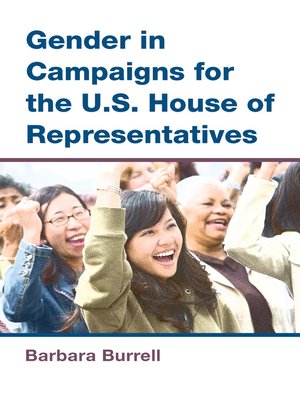Gender in Campaigns for the U.S. House of Representatives
ebook ∣ The CAWP Series in Gender and American Politics
By Barbara Burrell

Sign up to save your library
With an OverDrive account, you can save your favorite libraries for at-a-glance information about availability. Find out more about OverDrive accounts.
Find this title in Libby, the library reading app by OverDrive.



Search for a digital library with this title
Title found at these libraries:
| Library Name | Distance |
|---|---|
| Loading... |
An in-depth study of women congressional candidates over the past two decades| Barbara Burrell presents a comprehensive comparative examination of men's and women's candidacies for the U.S. House of Representatives in elections from 1994 through 2012. Analyzing extensive data sets on all major party candidates for 10 elections—covering candidate status, party affiliation, fund-raising, candidate background variables, votes obtained, and success rates for both primary and general elections—Burrell finds little evidence of categorical discrimination against women candidates. Women compete equally with men and often outpace them in raising money, gaining interest group and political party support, and winning elections.
Yet the number of women elected to the U.S. House has expanded only incrementally. The electoral structure limits opportunities for newcomers to win congressional seats and there remains a lower presence of women in winnable contests despite growing recruitment efforts. Burrell suggests that congressional dysfunction discourages potential candidates from pursuing legislative careers and that ambitious women are finding alternative paths to influence and affect public policy.
Yet the number of women elected to the U.S. House has expanded only incrementally. The electoral structure limits opportunities for newcomers to win congressional seats and there remains a lower presence of women in winnable contests despite growing recruitment efforts. Burrell suggests that congressional dysfunction discourages potential candidates from pursuing legislative careers and that ambitious women are finding alternative paths to influence and affect public policy.







